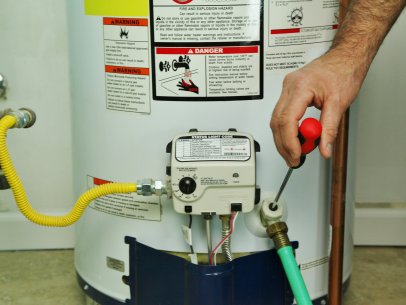Professional Advice for Maintaining Your Home's Hot Water SystemStraightforward Methods to Care for Your Home's Hot Water System Effectively
Professional Advice for Maintaining Your Home's Hot Water SystemStraightforward Methods to Care for Your Home's Hot Water System Effectively
Blog Article
Have you been looking for help and advice on Tips For Maintaining Your Hot Water Heater?

Hot water is vital for day-to-day comfort, whether it's for a refreshing shower or washing dishes. To ensure your hot water system runs successfully and lasts much longer, normal upkeep is crucial. This post gives practical suggestions and insights on exactly how to preserve your home's hot water system to stay clear of disruptions and expensive repair work.
Introduction
Preserving your home's warm water system might seem complicated, but with a few easy actions, you can guarantee it runs efficiently for several years to come. This overview covers whatever from comprehending your hot water system to DIY maintenance ideas and understanding when to call expert aid.
Relevance of Maintaining Your Warm Water System
Normal upkeep not just expands the life-span of your hot water system however likewise ensures it operates effectively. Ignoring maintenance can lead to decreased efficiency, greater power expenses, and even premature failure of the system.
Signs Your Warm Water System Demands Upkeep
Recognizing when your hot water system needs focus can stop significant issues. Look out for signs such as inconsistent water temperature, unusual noises from the heater, or rusty water.
Purging the Hot Water Heater
Purging your hot water heater removes debris accumulation, enhancing efficiency and prolonging its life.
Monitoring and Changing Anode Rods
Anode rods avoid corrosion inside the container. Checking and changing them when worn is crucial.
Facility Concerns Requiring Specialist Assistance
Examples include significant leakages, electric troubles, or if your water heater is consistently underperforming.
Regular Expert Upkeep Perks
Professional upkeep can consist of extensive inspections, tune-ups, and making sure compliance with safety and security requirements.
Inspecting and Changing Temperature Setups
Adjusting the temperature level setups makes sure ideal performance and safety and security.
DIY Tips for Upkeep
You can carry out a number of upkeep jobs on your own to keep your warm water system in top problem.
Checking for Leakages
Regularly evaluate pipes and links for leaks, as these can lead to water damages and higher costs.
Recognizing Your Hot Water System
Before diving right into maintenance jobs, it's valuable to understand the basic parts of your hot water system. Commonly, this includes the water heater itself, pipelines, anode rods, and temperature level controls.
Month-to-month Maintenance Tasks
Normal month-to-month checks can assist capture minor concerns prior to they escalate.
Checking Pressure Relief Valves
Examining the pressure relief valve guarantees it operates correctly and protects against excessive stress build-up.
Protecting Pipes
Shielding hot water pipes decreases warm loss and can conserve energy.
When to Call a Professional
While DIY upkeep is useful, some concerns require expert expertise.
Final thought
Normal upkeep of your home's hot water system is important for effectiveness, long life, and expense financial savings. By following these suggestions and understanding when to look for professional aid, you can guarantee a trustworthy supply of warm water without unexpected disruptions.
How to Maintain an Instant Hot Water Heater
Before tinkering with your hot water heater, make sure that it’s not powered on. You also have to turn off the main circuit breaker and shut off the main gas line to prevent accidents. Also turn off the water valves connected to your unit to prevent water from flowing into and out of the appliance. 2. When you’re done, you have to detach the purge valves’ caps. These look like the letter “T” and are situated on either side of the water valves. Doing so will release any pressure that has accumulated inside the valves while at the same time avoid hot water from shooting out and burning your skin. 3. When the purge valves’ caps are removed, you have to connect your hosing lines to the valves. Your unit should have come with three hoses but if it didn’t, you can purchase these things from any hardware or home repair shops. You can also get them from retail stores that sell water heating systems. Read the user’s manual and follow it to complete this task properly. When the hosing lines are connected, open the purge port’s valves. 4. You should never use harsh chemical cleaners or solutions when cleaning your unit. Make use of white vinegar instead. It should be undiluted and you’ll probably use about 2 gallons. 5. Now flush your water heater. This task should probably take about 40 minutes. We can’t give you specific directions for this because the procedure is carried out depending on the type, model and brand of your heater. With that being said, refer to the user’s manual. 6. When you’re done draining the unit, you have to turn off the purge port valves again. Remove the hosing lines that you earlier installed on each of the water valves. Put the valve caps (purge port) back in their respective places and be very careful so as not to damage the rubber discs that are found inside these caps. 7. Now that everything’s back in place, check your user’s manual again to find out how to reactivate your water heating system. 8. Once it is working, turn one of your hot water faucets on just to let air pass through the heater’s water supply pipes. Leave the tap on until water flows smoothly out of it. https://www.orrplumbing.com/blog/2014/september/how-to-maintain-an-instant-hot-water-heater/

I found that blog posting about How to Maintain Your Water Heater & Prolong its Life while doing a lookup on the search engines. Sharing is nice. Who knows, you will be doing someone a favor. I treasure your readership.
Click Here Report this page